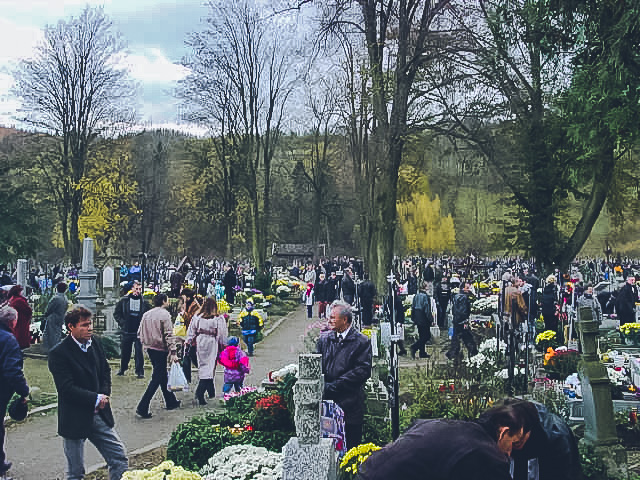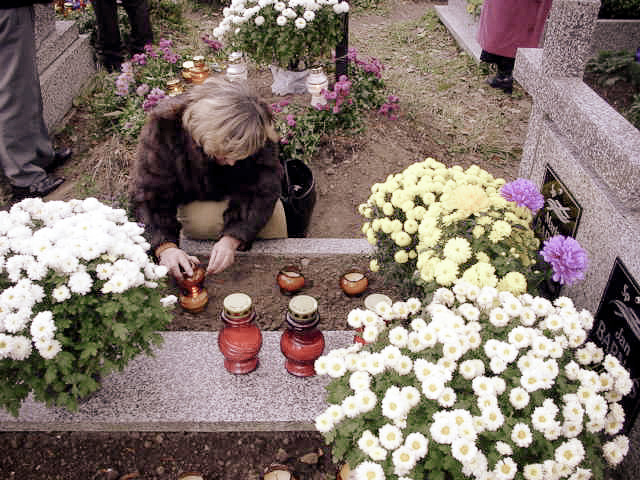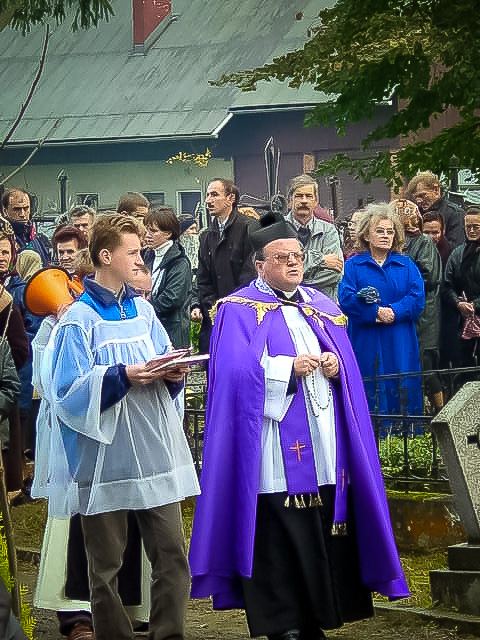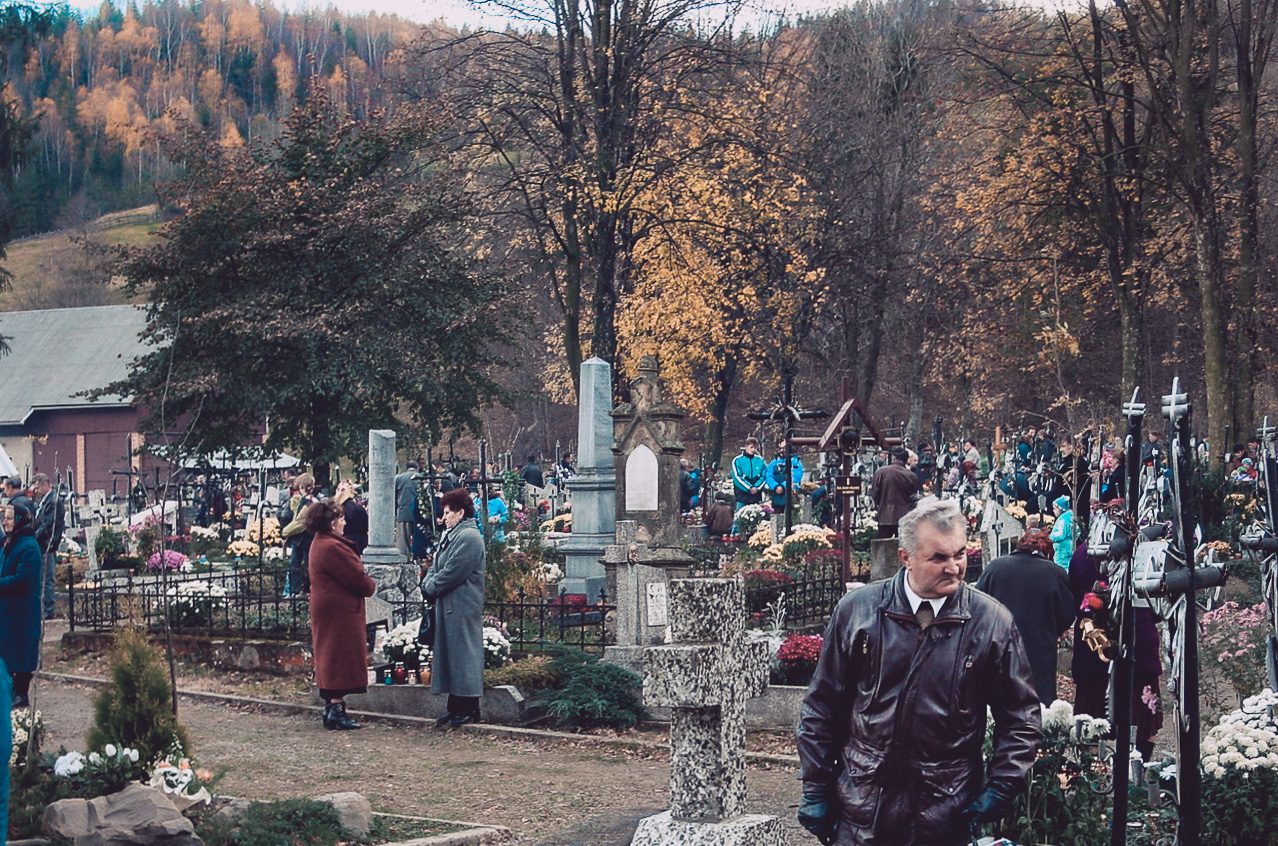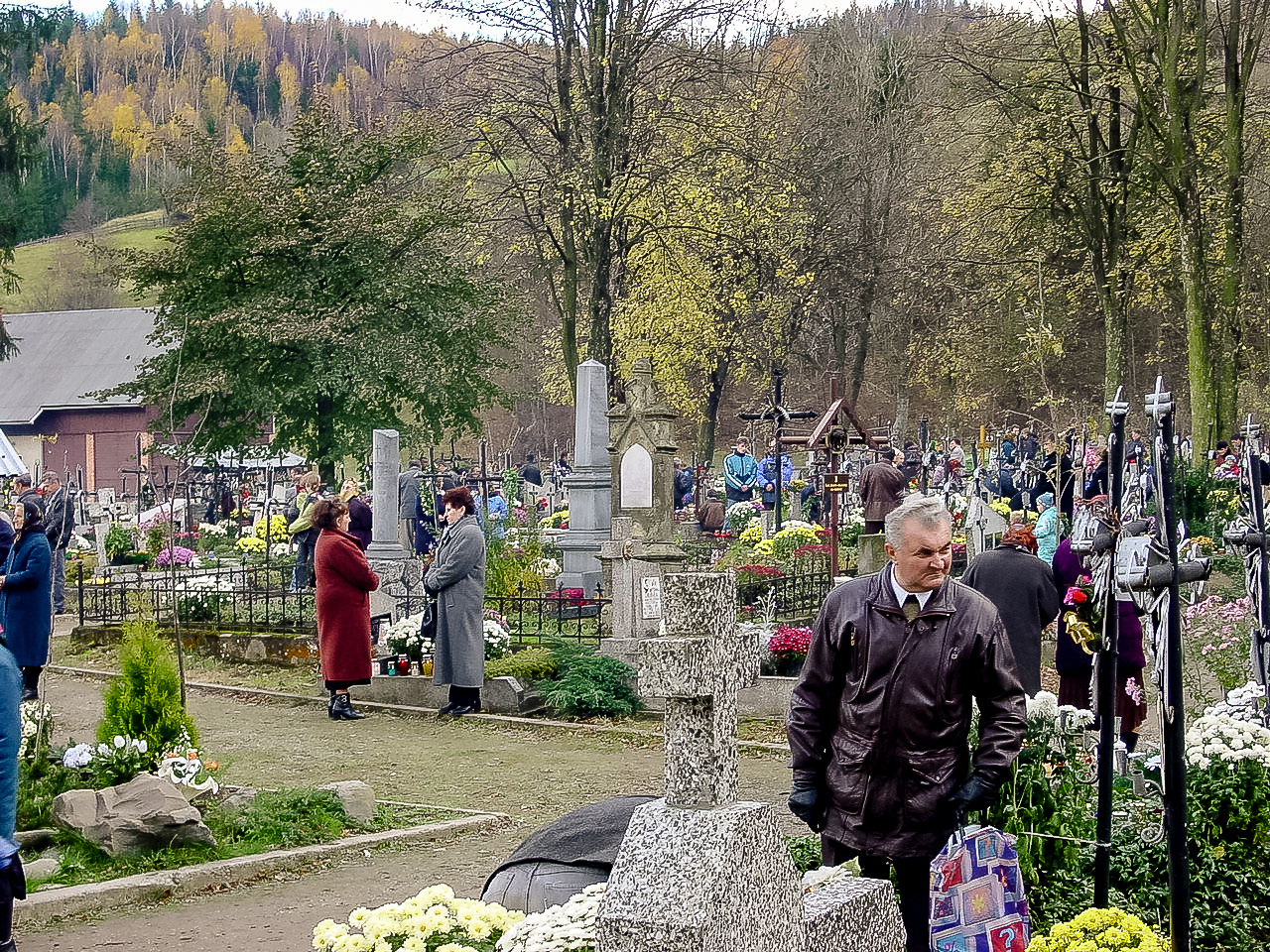Black Madonna

The window decorations began appearing early last week – colored paper cut-outs in the shapes of crosses, madonnas, and various religious symbols (doves, chalaces, candles, etc.). By Thursday, 99% of the houses here had something in the windows. Then the roadside streamers began appear, tied to pieces of twine stretched between wooden stakes nailed into the shoulder of the road. The reason for all this: “Some image of significance – a madonna or somethin – is coming,” a friend informed me after having talked to Jola, a friend of who lives across the street. By the time we left Friday for Nowy Targ, a nearby city, the whole of Lipnica “centrum” was covered with decorations. And my suspicions had been confirmed – the Black Madonna of Czestachowa, the “queen of Poland.”

When I came back from Nowy Targ Saturday afternoon the whole area was incredibly crowded – nuns, grandmothers, children, all milling about with the volunteer firemen in uniform and trying to keep everyone off the road itself. I went to the apartment, got my camera, and met [Susan] and [Mrs. Nowak] on the roadside. By that time, the fire department’s band had joined the crowd, as well as a group of traditional musicians decked out in traditional Orawian “strój” (costume). A procession of altar boys came down from the church, followed shortly by archbishop of Kraków and at least fifty priests.

This whole time, I kept thinking, “This is all for a picture!” The Black Madonna certainly has an almost mythical air, and it bends the knees of even the most “secular” Pole. For Protestants, it’s sometimes difficult for me to tell the difference between the Catholic notions of “adoration,” “veneration,” and “worship.” They pray to Mary, but they don’t worship her. They cross themselves when they see the Black Madonna, and kneel before statues of Mary and Christ, but don’t consider this idolatry because they don’t see it as worship. Veneration, they say, or adoration.
After a few moments, the sound of a siren announced the coming of the the madonna. It was housed in a Mercedes, the interior of which had been decorated with rosaries and other symbols of worship. A priest got out, walked to the back, and pressed a button set above the taillight of the van. The back hatch of the van began rising silently, and the madonna began sliding out – all automated, all very professional (and expensive, I’d assume). The priest/driver then nodded to the priests of Lipnica who approached the madonna, knelt, and kissed it after crossing themselves.

The madonna itself was housed on a special frame from which protruded two poles (much like the famed Ark of the Covenant) which were used to carry the queen of Poland. She was hoisted on firemen’s shoulders, and the crowd began singing, “Swięta Maryja, Matka Boże, witamy ciebie.” (Holy Mary, Mother of God, we welcome you.) They carried the madonna down to the church and all went inside for a special two hour mass.

All this was very curious. It seems impossible for them to deny at the very least that they are within a hair’s breadth of worshiping this thing. All the decoration, the pomp and displays of devotion. Of course all this was for the sake of the fifty or so priests from outside the village that came along with the madonna, but I would argue that the inhabitants did this to show the priests how devoted they are to the madonna. Anyway, all this was for a picture.
And I’ve saved the real irony of the situation for the end: I found out at the beginning of the processional that it’s not even the original, but a replica! The real queen of Poland sits in her shrine in Czestachowa, where other people are bowing down to the real picture, worshiping it and not some impostor. A friend assured me: “But there’s only one copy! This is the only copy!” Still, a fake is a fake . . .

Just a few moments ago, there was a report on the radio about the madonna’s visit to Lipnica. The vicar of Lipnica got quite a bit of radio time to talk about the significance of this (which had been in the works since September). He said something about being able to see the results of the visit, seeing how long the people will remember why Mary (he referred to the painting constantly and consistently as if it were a person) came to Lipnica. Or rather, why the replica of the painting of Mary was brought to Lipnica.
Skipping Class
I’m in the main church here in Sopot, skipping the first language lesson of the day. I needed some time alone, I decided. Who knows what PC administration might say.
This church is really quite small and relative modern. The walls are white with bricks along the edges serving as a border. It makes the whole thing look a bit like Lego blocks. The church yesterday in Gda sk was enormous. With its thin pillars and high, arched ceiling, it was the epitome of Gothic architecture. The entire interior was white, a creamy, Liquid Paper kind of dirty white. There was an enormous organ which J. S. Bach supposedly loved, an altar made in the fifteenth century that was at least twenty feet tall, and a huge crucifix with Mary and Peter (?) Standing at the base of the cross, with a skull at the bottom (Golgotha, I guess). There was another crucifix with a strikingly lifelike face which had an intriguing legend attached: The unknown artist hung a man on a cross and watched as he died to obtain an accurate likeness.
Around the walls of this church in Sopot are representations of the stations of the cross. I don’t know what they are, but they are all very similar: Christ on the way to Golgotha carrying the cross through a dark and empty landscape encountering several people along the way. Christ is always painted with a tired and somewhat painfully confused visage, almost childlike in some pictures.
People filter into the church to pray. Some even carry bags with the fruits of their morning shopping. It’s as if they are just dropping in on their way home. It’s rather strange. Are they offering their own prayers, or the Bisquick prayers they’re taught as children? I cannot understand the prewritten, memorized prayer. How can that mean anything? I remember the woman in Wraclaw who glanced at her watched as she muttered her prayer. It’s just another part of the ritual and repetition meant to keep people from thinking on their own.
At the top of the phallic arch over the alter is the eagle/chicken national symbol of Poland. A nice combination of religion and nationalism.
As I look around, I notice the arches on the side of the church have a particularly noticeable penile shape, complete with a tapered tip. I wonder why that is. The WCG of old could explain it, but I’m not sure it’s attributable to Satan’s evil influence . . .
Unknown Corpus Christi
I am waiting for the bus, sitting in front of a church. I went in for a moment, but decided I should probably leave — I didn’t cross myself with holy water (It appears to be stagnant water with a greasy film.) and I was getting a few looks (though there were several others who did not cross themselves either). Suddenly the bells began ringing and eventually I caught sight of a procession coming around from behind the church. Choir boys were dinging small bells and behind them was a procession of relics. A little behind that was the priest, walking under a canopy supported by six men, preceded by a young priest waving an incense burner. The head priest was holding a staff with a gold sun in front of his face — he was led by the arms, for he certainly couldn’t see where he was going. Behind the priest was a group of loosely organized lay-persons, singing a capella. The woman beside me knelt as the group went by. A strange thing, this Christianity.
